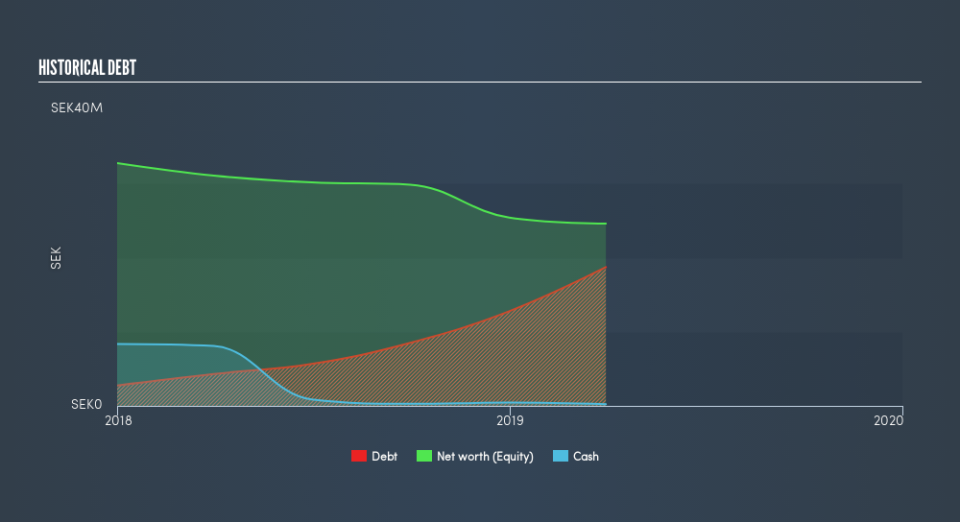How Financially Strong Is Paxman AB (publ) (STO:PAX)?

While small-cap stocks, such as Paxman AB (publ) (STO:PAX) with its market cap of kr954m, are popular for their explosive growth, investors should also be aware of their balance sheet to judge whether the company can survive a downturn. Since PAX is loss-making right now, it’s crucial to assess the current state of its operations and pathway to profitability. We'll look at some basic checks that can form a snapshot the company’s financial strength. However, potential investors would need to take a closer look, and I suggest you dig deeper yourself into PAX here.
Want to participate in a short research study? Help shape the future of investing tools and you could win a $250 gift card!
PAX’s Debt (And Cash Flows)
PAX's debt levels surged from kr4.3m to kr19m over the last 12 months – this includes long-term debt. With this increase in debt, PAX currently has kr224k remaining in cash and short-term investments , ready to be used for running the business. Moreover, PAX has produced kr1.5m in operating cash flow during the same period of time, leading to an operating cash to total debt ratio of 8.1%, indicating that PAX’s current level of operating cash is not high enough to cover debt.
Can PAX meet its short-term obligations with the cash in hand?
With current liabilities at kr37m, the company arguably has a rather low level of current assets relative its obligations, with the current ratio last standing at 0.68x. The current ratio is calculated by dividing current assets by current liabilities.
Does PAX face the risk of succumbing to its debt-load?
PAX is a relatively highly levered company with a debt-to-equity of 76%. This is a bit unusual for a small-cap stock, since they generally have a harder time borrowing than large more established companies. Though, since PAX is presently unprofitable, sustainability of its current state of operations becomes a concern. Maintaining a high level of debt, while revenues are still below costs, can be dangerous as liquidity tends to dry up in unexpected downturns.
Next Steps:
PAX’s high cash coverage means that, although its debt levels are high, the company is able to utilise its borrowings efficiently in order to generate cash flow. Though its low liquidity raises concerns over whether current asset management practices are properly implemented for the small-cap. I admit this is a fairly basic analysis for PAX's financial health. Other important fundamentals need to be considered alongside. I suggest you continue to research Paxman to get a better picture of the stock by looking at:
Valuation: What is PAX worth today? Is the stock undervalued, even when its growth outlook is factored into its intrinsic value? The intrinsic value infographic in our free research report helps visualize whether PAX is currently mispriced by the market.
Historical Performance: What has PAX's returns been like over the past? Go into more detail in the past track record analysis and take a look at the free visual representations of our analysis for more clarity.
Other High-Performing Stocks: Are there other stocks that provide better prospects with proven track records? Explore our free list of these great stocks here.
We aim to bring you long-term focused research analysis driven by fundamental data. Note that our analysis may not factor in the latest price-sensitive company announcements or qualitative material.
If you spot an error that warrants correction, please contact the editor at editorial-team@simplywallst.com. This article by Simply Wall St is general in nature. It does not constitute a recommendation to buy or sell any stock, and does not take account of your objectives, or your financial situation. Simply Wall St has no position in the stocks mentioned. Thank you for reading.

